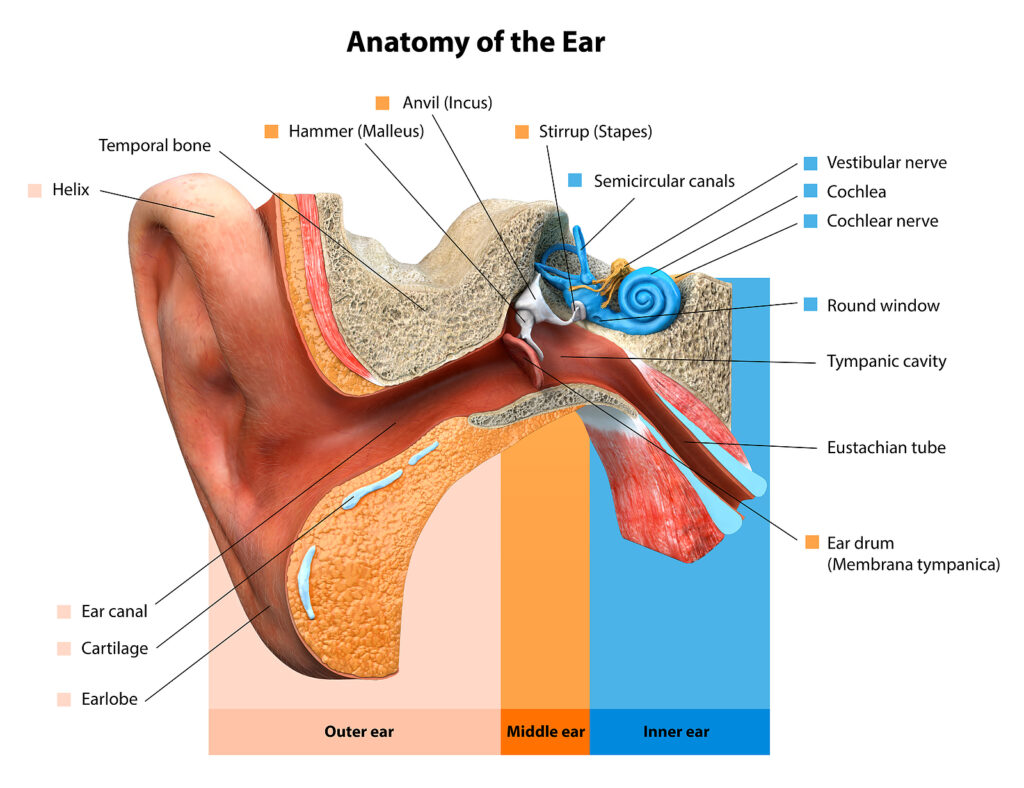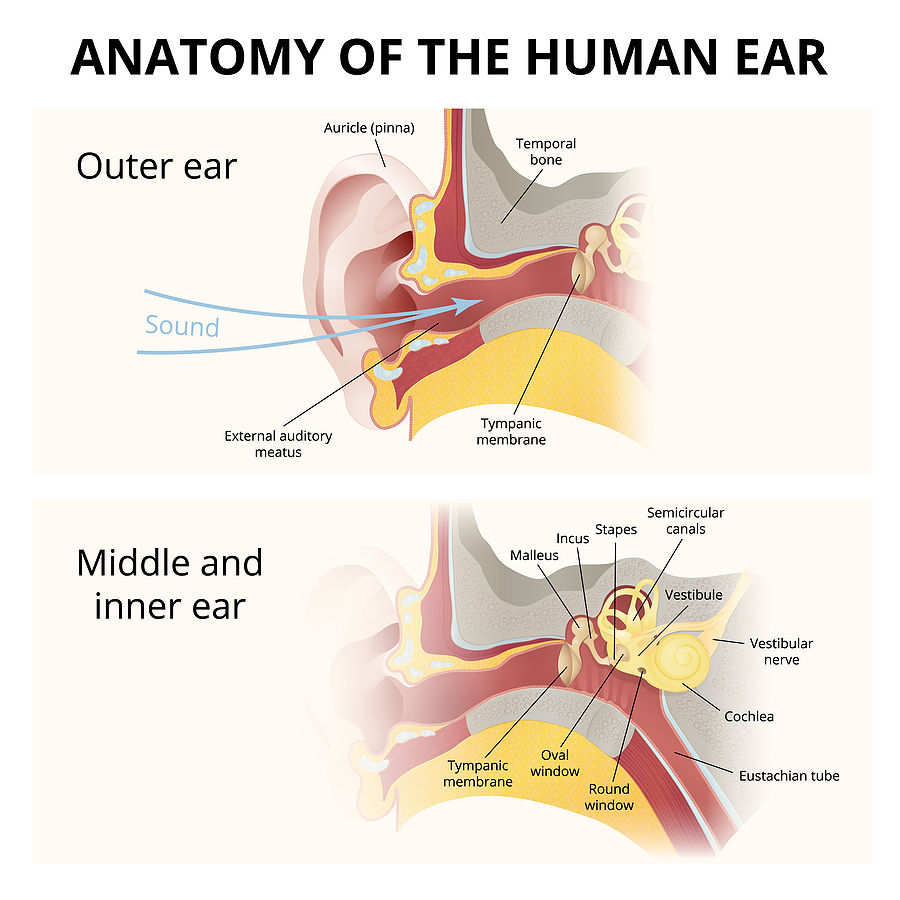Hearing Loss
There are two types of hearing loss. A conductive hearing loss exists when sound can not be transmitted through the middle ear (the part of your ear that gets an ear infection). This type of hearing loss can be due to a number of causes. Infections, scarring of the eardrum, otosclerosis (scarring of the bones of the middle ear), and trauma to the middle ear bones are just a few of the possibilities, but in many cases, it can be corrected without the need for a hearing aid.
The most common cause of conductive hearing loss is a middle ear infection. After an ear infection, fluid may become trapped behind the eardrum. This fluid will prevent the eardrum from moving properly. This will decrease the transmission of sound through the ear. While this situation will frequently resolve over a month without any treatment, placement of ear tubes (pressure equalization tubes) will correct the problem if it persists. You can read more about ear tubes in the Pediatric section of this website, however, adults often require these too.
Other common causes of a conductive hearing loss include otosclerosis, damage to the ossicular chain (3 tiny bones of the middle ear), a hole in the eardrum (tympanic membrane perforation), and a cholesteatoma. Otosclerosis (scarring of the bones) can be corrected with stapes surgery. Ossicular chain damage can be corrected using ossicular chain reconstruction procedures. A tympanic membrane perforation is corrected using a patch or sometimes a more complicated procedure, tympanoplasty. A cholesteatoma is a cystic lesion which often is removed using a mastoidectomy procedure.

Otosclerosis/Stapes Surgery:
Sound enters the ear through the external ear canal. When the sound waves hit the eardrum it vibrates. The eardrum is connected to the inner ear through a series of three bones called the ossicles. The eardrum is connected to the malleus (hammer), which is connected to the incus (anvil), which in turn is attached to the stapes (stirrup). The stapes is connected to the inner ear. When the eardrum vibrates it sets the three bones in motion. As the stapes vibrates, it sends signals to the inner ear, which then turns these signals into nerve impulses and sends them to the brain.
Otosclerosis occurs when there is an excess growth of bone around the connections of the ossicles and particularly at the site where the stapes meets the inner ear. Any of these tiny bones can be involved by otosclerosis, but the stapes is most commonly involved. In order to restore the mobility of the ossicles a stapedectomy or stapedotomy is performed. In these procedures the stapes, the last of the three bones in the middle ear, is partially or completely replaced by a prosthesis. This allows for transmission of the sound waves to the inner ear and can dramatically improve hearing.
The most important risk of a stapedectomy is complete loss of hearing in the ear. The risk of this occurrence is considerably dependent on the experience of the surgeon. The physicians at Berks ENT Surgical Associates are highly experienced with this procedure, making a hearing loss unlikely. While hearing loss is a low risk, the potential improvement is enormous. To learn more about this procedure and how it can improve your hearing, a discussion with an experienced surgeon is highly recommended.
Ossicular Chain Reconstruction:
Sound enters the ear through the external ear canal. When the sound waves hit the eardrum it vibrates. The eardrum is connected to the inner ear through a series of three bones called the ossicles. The eardrum is connected to the malleus (hammer), which is connected to the incus (anvil), which in turn is attached to the stapes (stirrup). The stapes is connected to the inner ear. When the eardrum vibrates it sets the three bones in motion. As the ossicles vibrate they send signals to the inner ear, which then turns these signals into nerve impulses which are relayed to the brain.
Anything that damages the ossicles can produce a severe conductive hearing loss. Transmission of sound to the inner ear is significantly diminished. The most common problems that damage the ossicular chain are trauma and a cholesteatoma. Often, the joints between the bones of the middle ear are disrupted during trauma. These joints and bones can also be eroded by a cholesteatoma. Often the bones in the middle ear have been removed during prior mastoid surgery. In any case, the result is a severe conductive hearing loss.
This type of hearing loss can be significantly improved with an ossicular chain reconstruction. During this operation the connections between the bones of the middle ear are reestablished. This allows for the transmission of sound to occur once again, significantly reducing or eliminating the hearing loss. The specialists at Berks ENT Surgical Associates have extensive experience performing this kind of reconstructive procedure. We are often able to reconstruct previously operated ears. This procedure can often improve a severe hearing loss.

